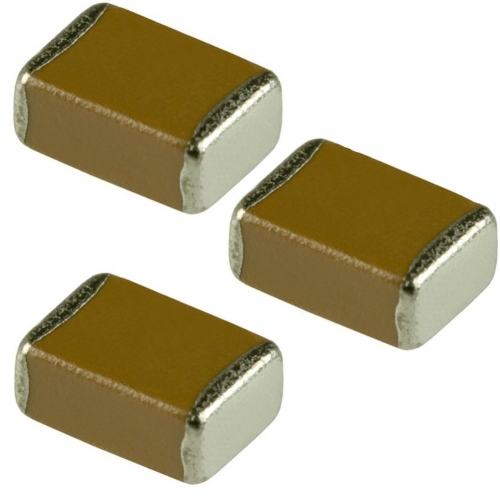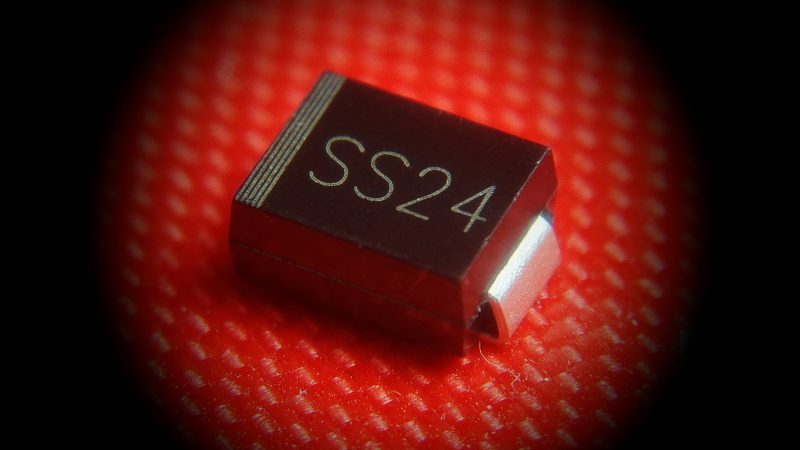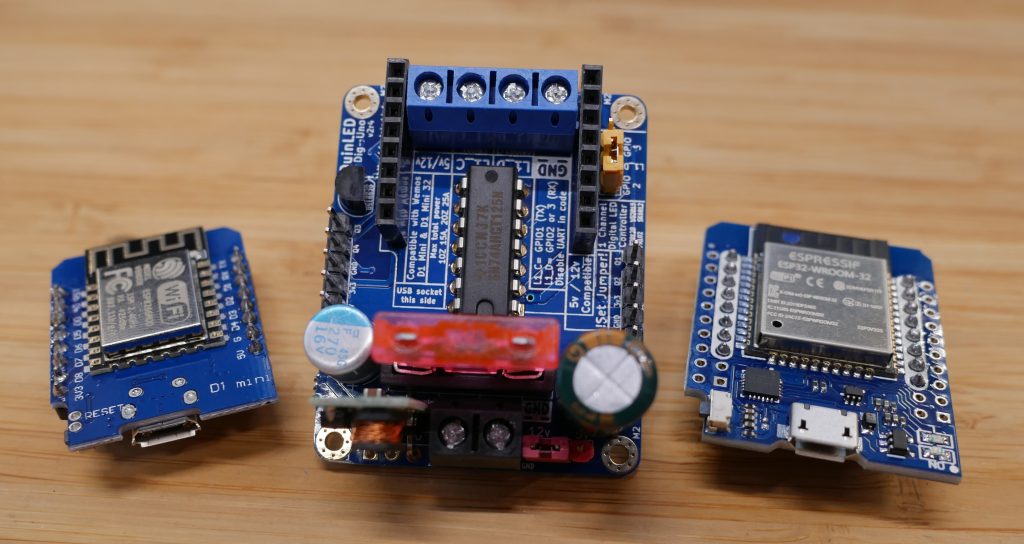QuinLED-Dig-Quad Hardware guide
This guide is now old, please go back to the index page for the newest version!
The board is now also available in a pre-assembled version here!
To build the QuinLED-Dig-Quad you are going to need several components which are listed below. As a little disclaimer, please take a look at this article about my shopping links. After reading that, make sure to also take a look at the additional hardware and tools you might need to be able to complete this project. Then I also have articles about 5v and 12v addressable LED strip and the differences of them and even an article about different addressable LEDs chips you can buy!
Those articles are a lot of information but will teach you everything you need to know! If you have any questions about the components, let me know on Discord!
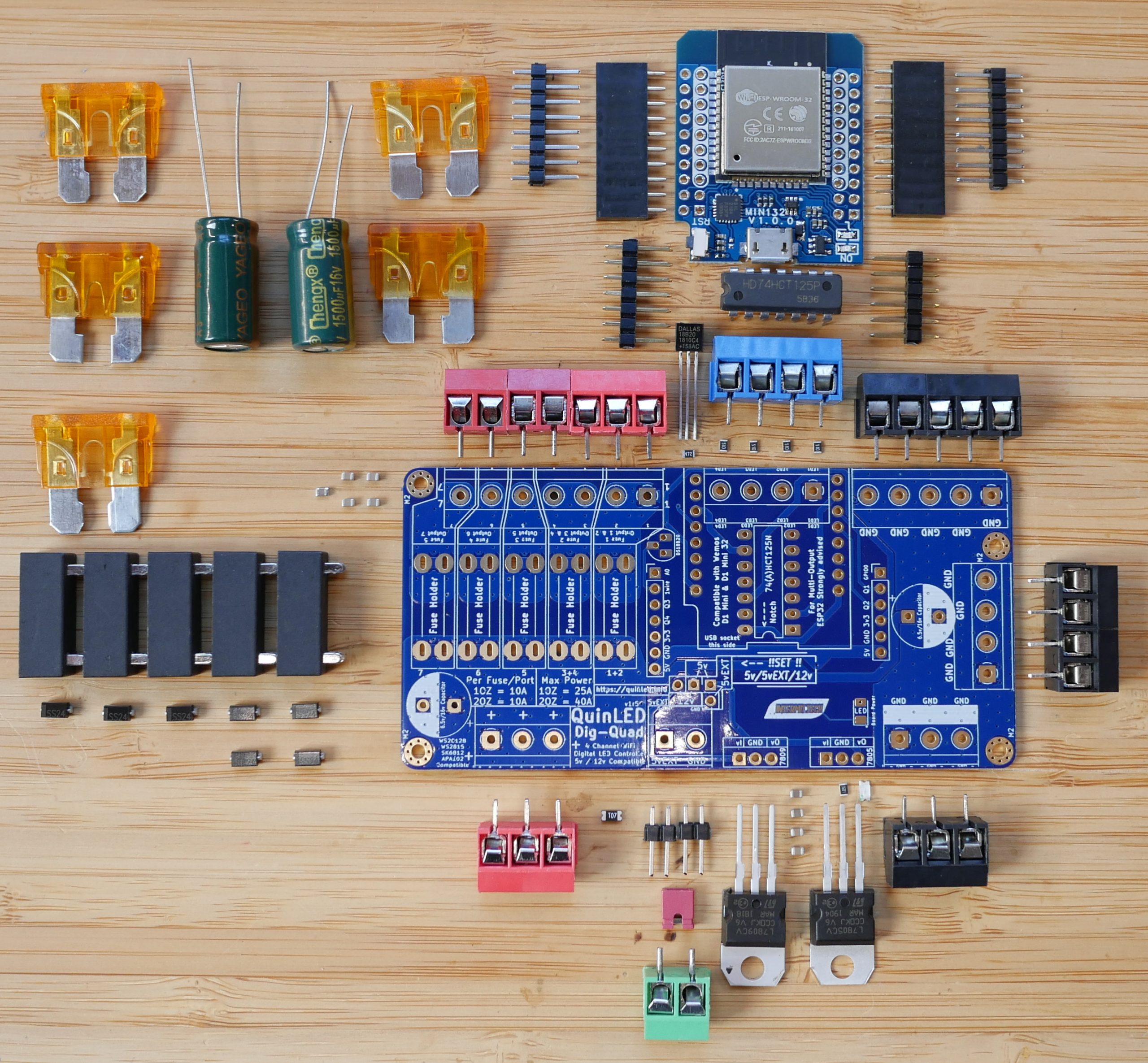
Total costs for a single board
What a single fully built QuinLED-Dig-quad board will cost is a bit harder to determine then my other boards because you have several options. These are:
- Getting 1OZ or 2OZ PCB (Please see bottom of this page)
- Getting Phoenix style plugs or screw terminals (Please see bottom of this page)
- Making the board 5v only or 5v+12v compatible (Minor cost this time, I suggest to always include)
- Using an ESP8266 or ESP32 (ESP32 highly recommended)
These per board values are a bit skewed because it’s calculated using bulk bought components, buying minimum quantities of all the components will make it a bit more expensive per board
In regards to components (so without PCB costs) and calculating with 5v+12v always included and using normal screw terminals you are looking for about 15$ with an ESP32 included. So generally speaking, a completed board including 2oz PCB (average cost), ESP32 and everything included will cost you ~20$ to 25$ depending on quantity buying count and varying shipping costs.
Stepping down a bit and going with an ESP8266 and using a 1oz copper PCB costs come down significantly and land between ~10$ to 15$ per board.
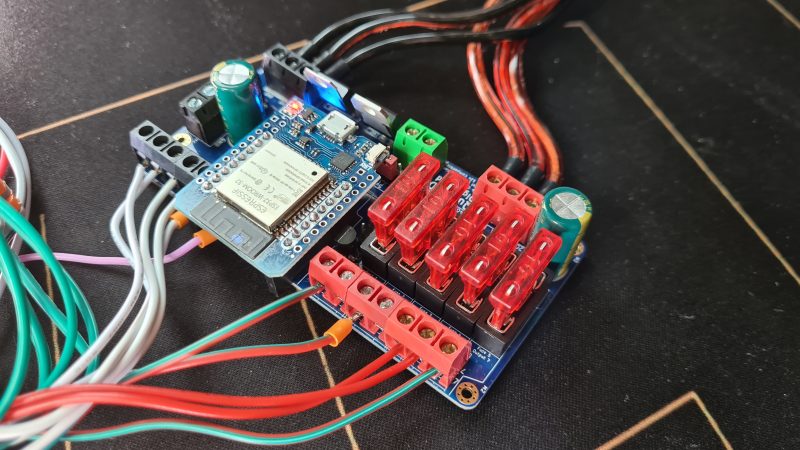
Components needed
Most components come in multiples of 5 or 10. I will try to link to several batch sizes when I can so you don’t immediately have to buy the amount for 10 or more boards. Of course, if you do, the per board price becomes (much) cheaper! Also when buying larger amounts of components you slowly but surely amass common components used in hardware tinkering which are convenient to have lying around! I also try to share a lot of components with my other designs, for instance if you bought components for my QuinLED-Dig-Uno board, you will have 90% of the components already to build a QuinLED-Dig-Quad!
All amounts of the components will be listed in green text per component type on the list. The amount listed there is for building a single board!
Board Summary
You need the following components and quantities:
![]()
QuinLED-Dig-Quad PCB boards
- 1x QuinLED-Dig-Quad PCB
I always order my boards from dirtypcbs.com or PCBway and both deliver excellent quality. From DirtyPCB if you order a protopack you get anywhere from 10 to 12 boards and all of those should work perfectly. If you include shipping, their prices are very competitive! But because of popular demand I have now also included a link to PCBway, their ePacket shipping can sometimes be cheaper and quicker then what DirtyPCBs offers but it differs per country and location, check what works best for you:
Slow shipping is SLOW (sometimes 8+ weeks). PCBway e-packet is a good compromise between decent time and money
Board choices, set options to Quantity 10/Protopack, 10x10cm, 1.6mm thickness, color blue, 1OZ or 2OZ
![]() DirtyPCB QuinLED-Dig-Quad_v1r6
DirtyPCB QuinLED-Dig-Quad_v1r6
— If you do not have a PCBway account yet, consider creating one using this affiliate link! 🙂 After creating come back to this page and use order link above.
This above links are for ordering 9,8×4,8 cm boards of the QuinLED-Dig-Quad which will yield you 10 to 12 functional boards (select 10 using PCBway). If you would like to order more than one of my design please use PCBway to combine several orders and share shipping cost!
Gerber files?
I do not make the raw gerber files available. I might release these in the future so you can use your own favorite board house but in the past I’ve had issues where people would keep using (and spread) old versions because that’s what they downloaded at some point in time. Also there were complications where certain board houses did things differently then I expect them to do. That complicates things such as optimizing and improving the design over time, hopefully you can understand.
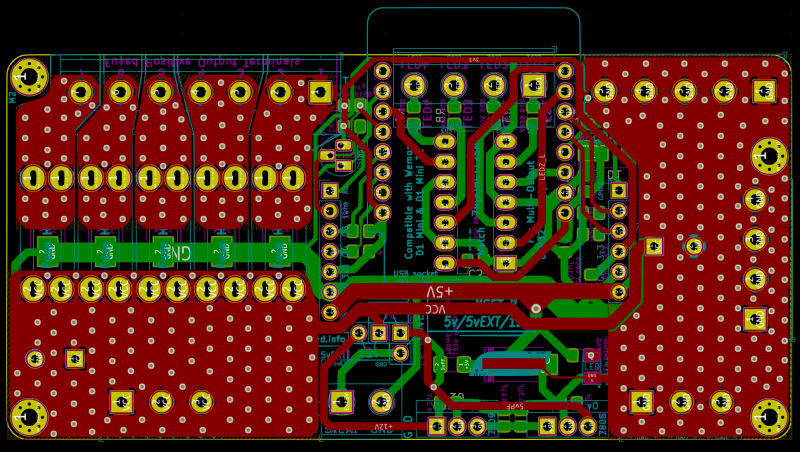
QuinLED-Dig-Quad v1r6 PCB
![]()
Wemos D1 Mini (ESP8266) and/or Wemos D32 Mini (ESP32)
The main brains for the QuinLED-Dig-Quad can be the Wemos D1 Mini which is an ESP8266 based board or the Wemos D32 Mini which is an ESP32, the PCB has been designed in such a way that you can literally swap them! The main advantage of the ESP32 is that it’s a lot faster so it can handle more LEDs or sensors connected to it using the GPIO pins.
For the QuinLED-Dig-Quad the ESP32 is recommended, it will become especially important once multi-channel output becomes available in software (Currently being worked on in WLED)! It’s also better if you want to use audio reactivity for instance.
- 1x Wemos D1 Mini (ESP8266)
and / or
- 1x Wemos D32 Mini (ESP32)
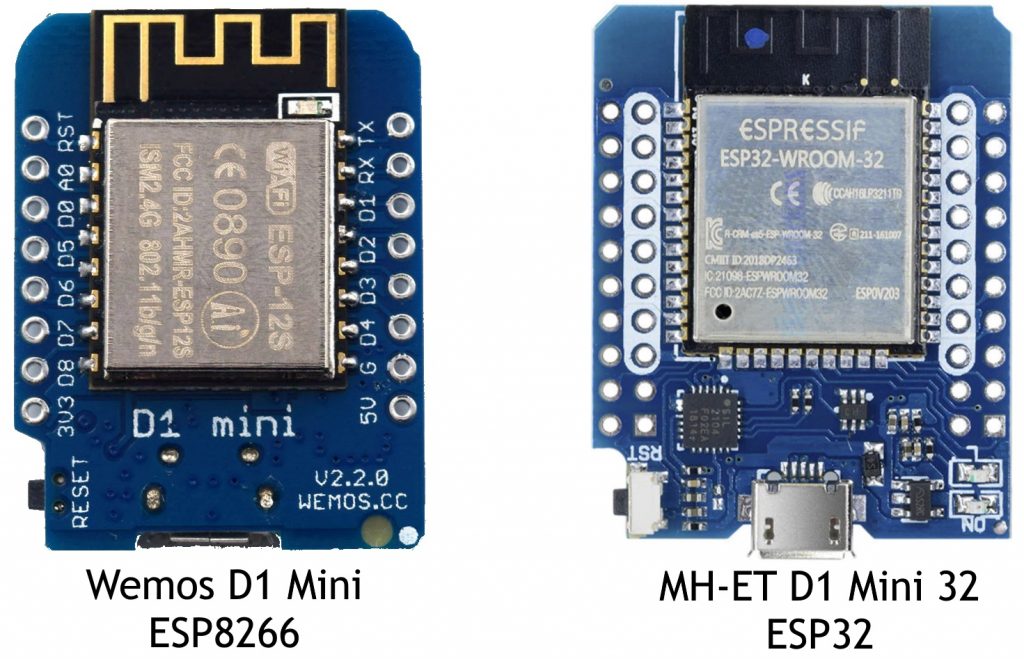
![]()
Female headers
In theory you don’t need to buy these because they should come with your Wemos D1 Mini or Wemos D32 Mini. If they didn’t you need 2x 8 pins female headers.
*Some Mini 32 kits come with 10 pin short headers, but do have 8 pin long headers in the package. Both can be used, the board is laid out in such a way that the 10 pin header also fits without a problem!
- 2x 8 pins 2.54mm female header
![]() 10 pcs 8 pin 2.54mm female headers
10 pcs 8 pin 2.54mm female headers
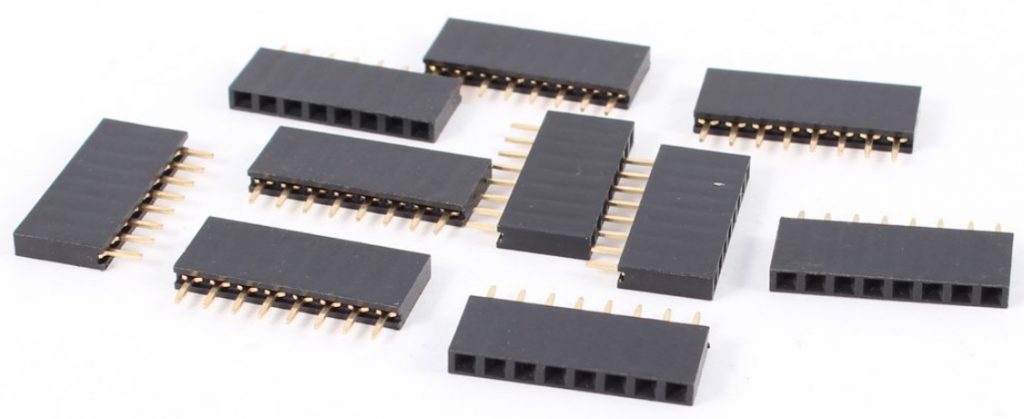
Terminals
There are lots of terminals on the QuinLED-Dig-Quad, hopefully the below table makes clear what you need to buy in order to fit them all. I personally use different colors for input, output and other functions but buying multiple colors does make it more expensive. On the other hand, these kind of terminals are used in lots of project, so it’s always good to have some!
Below is my suggested amount of each type. Some can be done cheaper by making a 4pin from 2x 2pin for instance.
- Per QuinLED-Dig-Quad you need
- 1x 4pin BLUE – LED Data signal output
-
- 2x 3pin RED – Board Power Positive Terminals
- 2x 3pin BLACK – Board Power Input Terminals
-
- 3x 2pin BLACK – Board Power Input Terminals
- 2x 2pin RED – Board Power Positive Terminals
-
- 1x 2pin GREEN – 5vEXT terminal
Above are just suggestions, if you want to build these terminals by using other combinations, that is fine too. In the end you are going to need to have the following:
- 2x 3pin power input
- 1x 2pin 5vext
- 1x 7pin positive out
- 1x 5pin negative out
- 1x 4pin negative out
Screw Terminals vs Phoenix Plug terminals
In this article I’m linking to normal screw terminals I also use on my boards. I have a dedicated article on using Phoenix style plug terminals, these work great and improve ease of use a lot but can handle less continuous power!
[DEDICATED ARTICLE]
Copper or Iron “feet”
If a listing or sellers asks if you want copper or iron feet, please get the copper version since all current handling testing was done with these.
Terminals
![]() 2 pin screw terminals (all colors)
2 pin screw terminals (all colors)
![]() 3 pin screw terminals (all colors)
3 pin screw terminals (all colors)
![]() 4 pin screw terminals (all colors)
4 pin screw terminals (all colors)
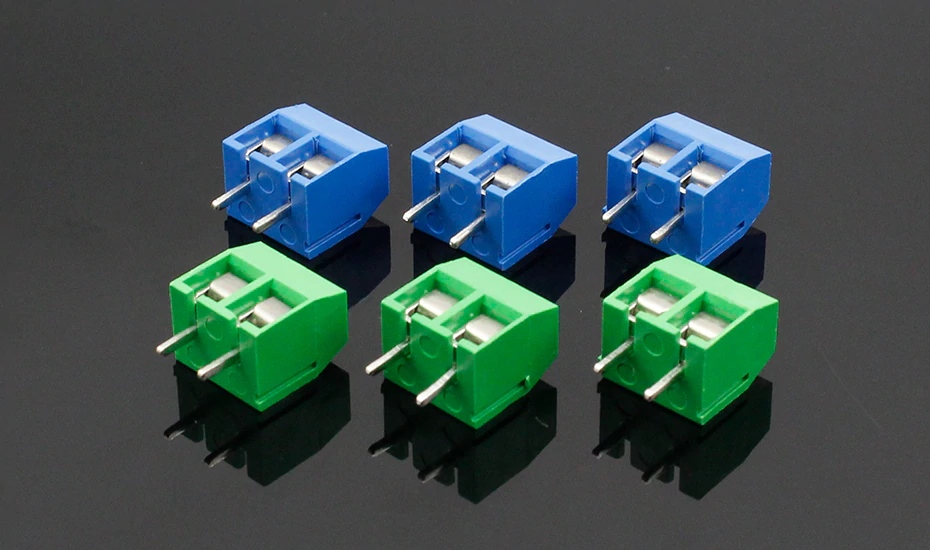
2.54mm Male pin headers
For the GPIO pins you need to get some pin male pin headers. The pins come on a strip and you can buy a strip of 40 and just snip off the length you need.
- GPIO
- 1x 7 pin single row 2.54mm male pin headers (GPIO headers)
- 1x 6 pin single row 2.54mm male pin headers (GPIO headers)
- 2x 2 pin single row 2.54mm male pin headers (GPIO headers)
2.54mm pin headers (different colors) + Jumpers
- 1x Red jumper
The QuinLED-Dig-Quad only has a power selection jumper, I recommend getting those in red, I recommend getting a kit of colored pin headers + jumpers using the link below!
![]()
Set of Colored pin headers + Jumpers (Amazon link without jumpers!)
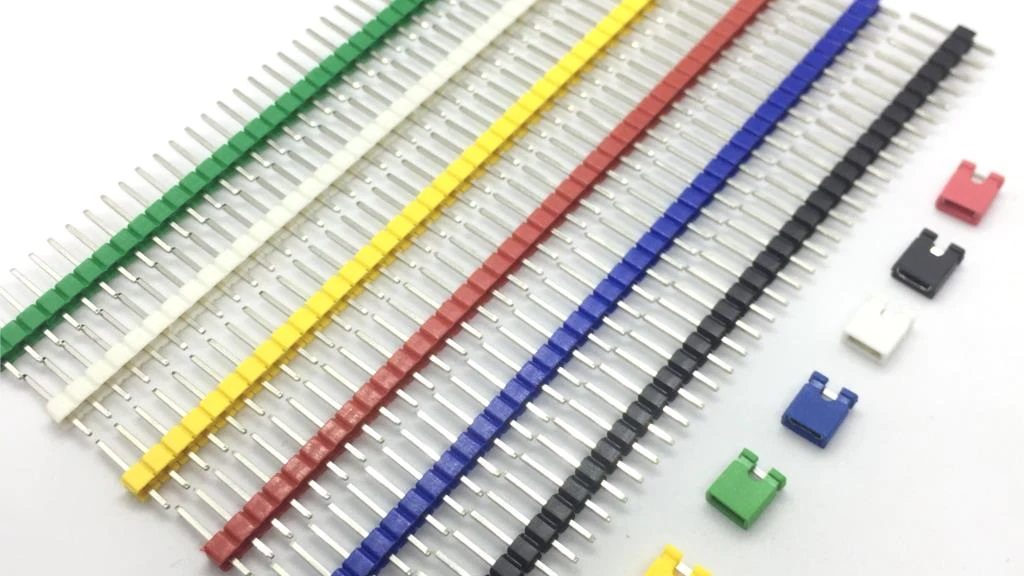
Jumpers
!If you bought the above pin header kit from Aliexpress or are using the alternative switches, you do not need separate jumpers!
As mentioned above, you need a jumper to set the power input selection the QuinLED-Dig-Quad, it’s recommended to just get a kit of jumpers.
- 1x Red jumper
![]()

0805 Resistors
Depending on what parts you are going to use on the board you might need some resistors:
- Required
- 4x 0805 51 (51R) Ohm resistor (For LED data lines) (REQUIRED!)
- 1x 0805 3.6K (3.6K) Ohm Resistor (For board status LED)
- Optional
- 1x 0805 4.7k (47K or 472) Ohm resistor (For Dallas Temperature Sensor, you can leave it off if you don’t use it)
- 5x 0805 10k Ohm resistor (For 2x Pull-Up and 2x Pull-Down pads for Q1,Q2,Q3 and Q4 GPIO pins, 1x for GPIO0) (You can leave them off if you don’t use them!)
*You will need a tweezer to put these into place, make sure to check out the tools section!
![]() 100 Pcs 0805 resistor (Has 51R, 3.6K, 4.7k and 10k available)
100 Pcs 0805 resistor (Has 51R, 3.6K, 4.7k and 10k available)
(Optional 0805 Resistor book)
Optionally you could also choose to buy an 0805 resistor book. This booklet comes with lots of different values included, check it out over here.
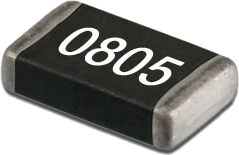
0805 Capacitors
To stabilize power delivery to all components a few capacitors are needed. For space saving and ease of soldering we’re using 0805 size capacitors.
- 6x 0805 0.1 uF (100 nF) Capacitor
- 2x 0805 0.3uF (300nF) Capacitor (If you do not have 300/330nF a 470nF capacitor should work fine too!)
- 1x 0805 10 uF Capacitor
*You will need a tweezer to put these into place, make sure to check out the tools section!
0805 0.1uF (100nF) and 1ouF
![]() 100 Pcs 0805 0.1 uF (100 nF) Capacitor (Link has 100nF and 10uF available)
100 Pcs 0805 0.1 uF (100 nF) Capacitor (Link has 100nF and 10uF available)
0805 0.1uf (330nF)
![]() 100 Pcs 080.5 0.33 uF (330 nF) Capacitor
100 Pcs 080.5 0.33 uF (330 nF) Capacitor
(Optional 0805 Capacitor book)
Optionally you could also choose to buy an 0805 capacitor book. This booklet comes with lots of different values included, check it out over here.
*These books generally do not have the 330nF capacitor, using a 470nF in it’s place should work fine
SMD 1206 6v 750mA – 1000mA Polyfuse
To try and protect the onboard electronics from something going wrong I’ve implemented a polyfuse on the board. This is basically an auto-resetting fuse that if triggered recovers automatically.
The board needs a 750mA to 1000mA fuse. Since all the voltage pin headers also pass through this fuse, if you are planning on using a lot of external stuff like Buttons, Sensors or a relay it’s advised to go for the 1000mA variant.
(If asked for voltage, 6v or higher)
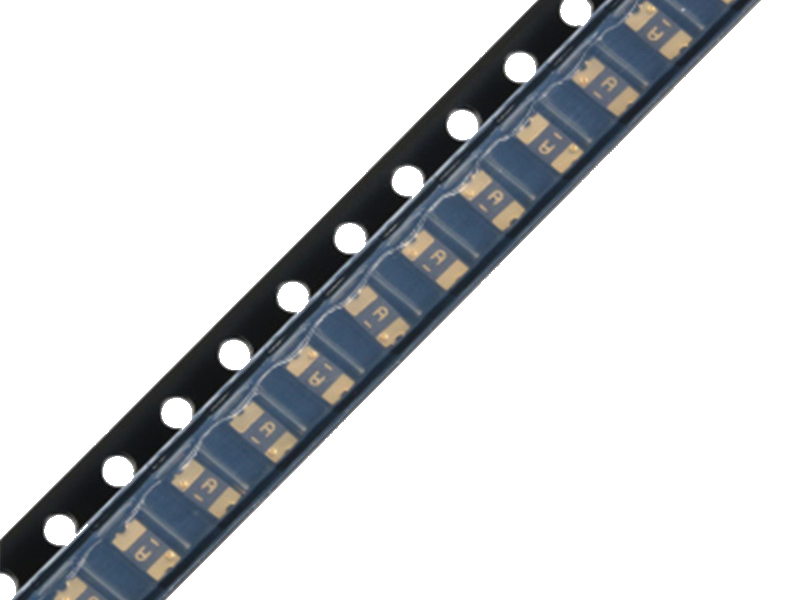
SMD 1206 LED
I’ve added a little power LED to the board, once the onboard electronics receive 5v it will turn on letting you know that the board has power online! This is especially nice if you are using 2 power supplies and a relay with the board so that you know it’s still running while your big noisy power supply is off.
I like using a Blue LED (together with a blue PCB, denoting my Digital controller line) but you can use whatever color you like (or get a multi-pack). Please note that the LED resistor is calibrated with these blue LEDs (3.6K Ohm) and that if you change the LED you might also need to change this resistor to make it shine brighter or less bright!
![]() 100pcs 1206 SMD Blue LED diode
100pcs 1206 SMD Blue LED diode
Dallas DS18B20 TO-92 Temperature sensor
All the boards, including the QuinLED-Dig-Quad have a spot for a Dallas DS18B20 TO-92 temperature sensor. It’s a cheap way to add a little sensor to the board!
- 1x Dallas DS18B20 TO-92 temperature sensor
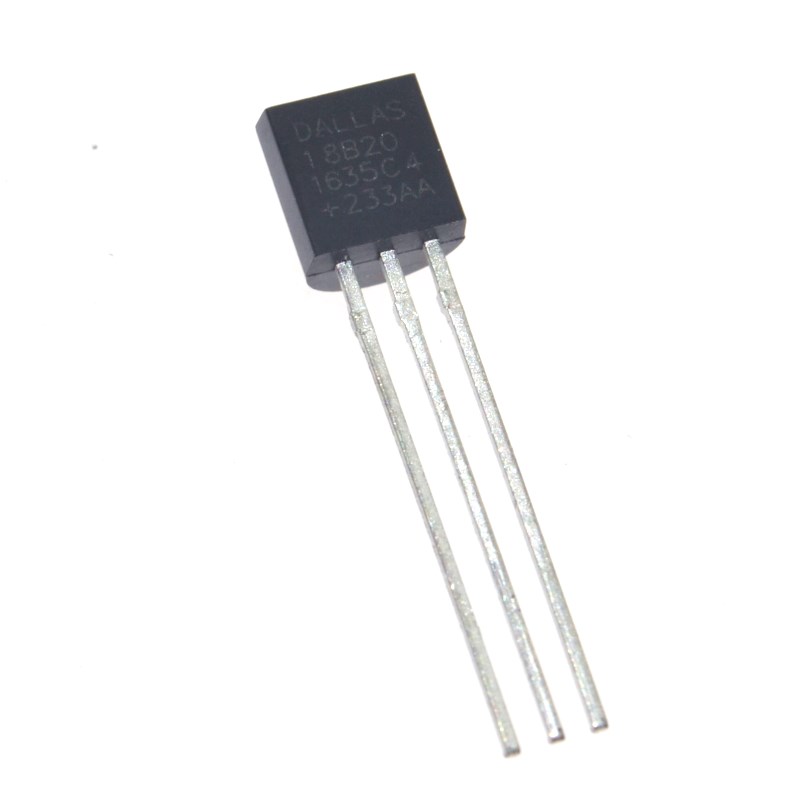
Level Shifter
The ESP8266 & ESP32 natively operates at 3.3v but the Digital Addressable LED strips expect 5v for their input logic signals. Often, sending 3.3v will work but if you start using longer cable runs or longer LED strips (more complex data signal), errors can start to show up. Feeding a correct 5v fixes these issues!
The variant used is the same as on the QuinLED-Dig-Uno a 74AHCT125N in a DIP14 package. It’s suited for high speed switching which is required for APA102 LED strip for instance. All 4 output terminals are fed through the level shifter! They are cheap if you buy them in packs of 10. The DIP14 package also means they can be easily soldered directly to the board or if you so desire can be placed into a socket.
*These shifters are uni-directional, you cannot connect switches or anything else that sends input or expects 2 way communication back to the board on these channels! The broken out external GPIO pins on the board do not have this limitation.
- 1x 74AHCT125N DIP14 Level Shifter
![]() 74AHCT125N Level Shifter (Shopping links have different amounts!)
74AHCT125N Level Shifter (Shopping links have different amounts!)
(The Aliexpress link is for 20, if you need less take a look at the following mouser listing. If that also doesn’t work for you, you can also find them on Ebay)
–Alternative
Although the AHCT is better (it’s faster) if you can’t find it in stock or want to save a little bit of money the non-“a” version works well for ws2812b, sk6812 and the likes. If you want to run APA102 or similar LED strip I still advise to get the “A” version!

Large Capacitors
Although everything will actually work without these big caps they serve 2 goals. The first is to limit inrush current into the LED strips which can sometimes damage the LEDs logic chips and second is to stabilize power when different amounts of current is needed because of very rapid color changes, the large capacitors will be able to smooth the demand a bit and help your power supply out, taking the big hits and keeping the LED strip bright and constant whatever the pattern!
The board has two spots for these big capacitors.
5v/12v Selectable
When the board will also be used with 12v LED strip you need to make sure that all capacitors used can handle this. Because of that reason I suggest using 16v capacitors
- 2x 10mm free height: 1x 16v 1500uF capacitor
![]()
10Pcs 10mm x 20mm (height) 16v 1500uF capacitors

SMD Diodes
The QuinLED-Dig-Quad has several diodes on board. These server as protection circuits and to prevent back feed from the USB terminal on the ESP connector to the board.
Do NOT connect both a power supply AND USB at the same time!
It is recommended to take the ESP32 module off the board for USB programming
- 7x SS24 diode
*You will need a tweezer to put these into place, make sure to check out the tools section!
PCB Fuse holder
To try and add a bit more “security” to the board I have added an inline fuse holders on the PCB. This holder accepts standard “car” style fuses which are cheap and easy to get in a lot of different values. Take a look at my “what value fuse should I use” (WIP) article to figure out which values you should work with.
- 5x PCB fuse holder
(Thes PCB Fuse holders get a lot cheaper when buying in bulk, also check out the other links)
![]() 50 Pcs PCB fuse holder (Very cheap a piece)
50 Pcs PCB fuse holder (Very cheap a piece)
Shipping can take very long for this item, you can also find them on Mouser or otherwise maybe Ebay. Or you can try searching for part nr: 3557-2
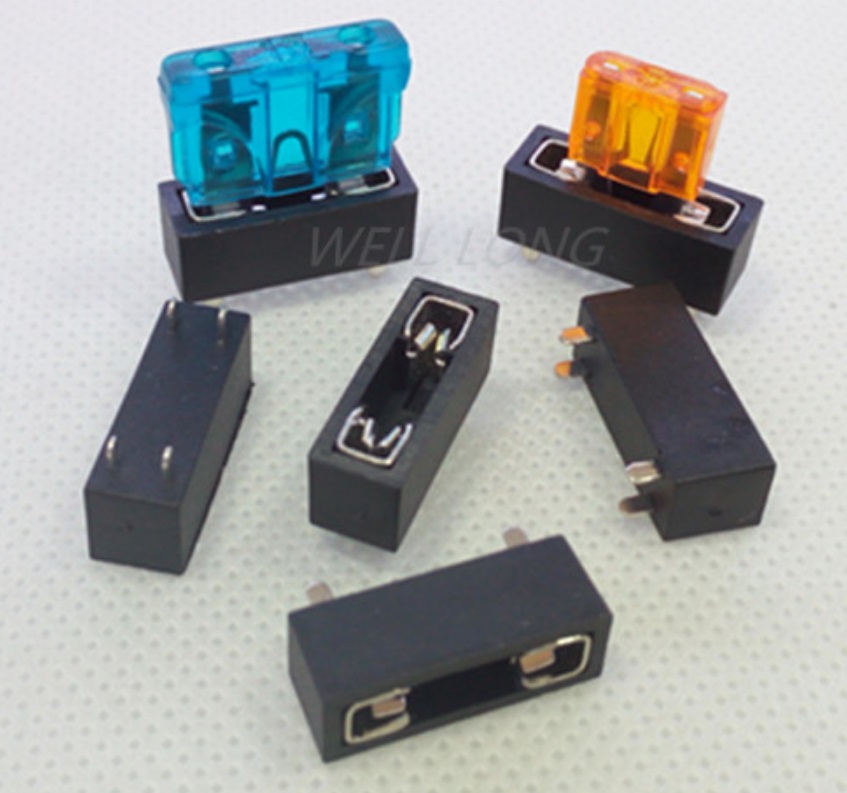
ATO fuses
- 1x Assortment of ATO size fuses
Once you have fuse holders you will need some fuses. Again, take a look at my “what value fuse should I use” article. With that said, to start out I recommend getting a assortment kit with lots of different values included.
![]() 1x ATO standard size fuse assortment kit
1x ATO standard size fuse assortment kit
–update 2020-06 Updated Aliexpress link for better quality
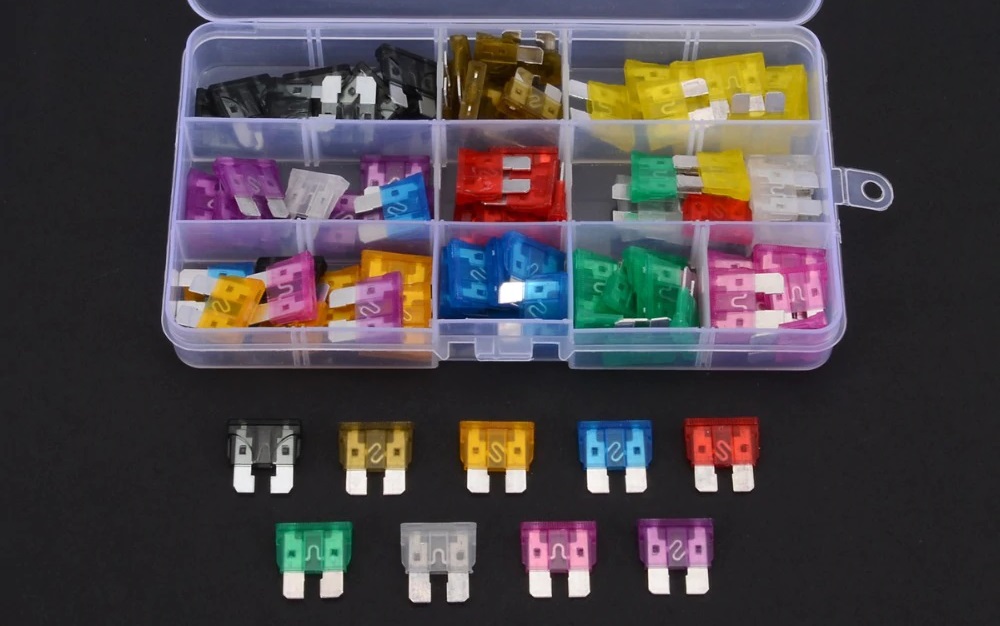
12v Linear converters
To try and keep the board cost as low as possible, for the QuinLED-Dig-Quad I have switched to dual linear converters to go from 12v to 5v for the onboard electronics. The downside to this is they they produce a bit of heat but the upside is that they are much cheaper then the DD4012SA_5v used on the QuinLED-Dig-Uno. The buck converter can still be used if desired, with a little trick, check this article how to do this!
Since these converters are so cheap, I recommend equipping all boards with them (but they are still optional if you plan on just using 5v or 5vEXT)
- 1x TO-220 LM7805
- 1x TO-220 LM7809
![]() 50x LM7805 TO-220 Linear regulator
50x LM7805 TO-220 Linear regulator
![]() 50x LM7809 TO-220 Linear regulator
50x LM7809 TO-220 Linear regulator
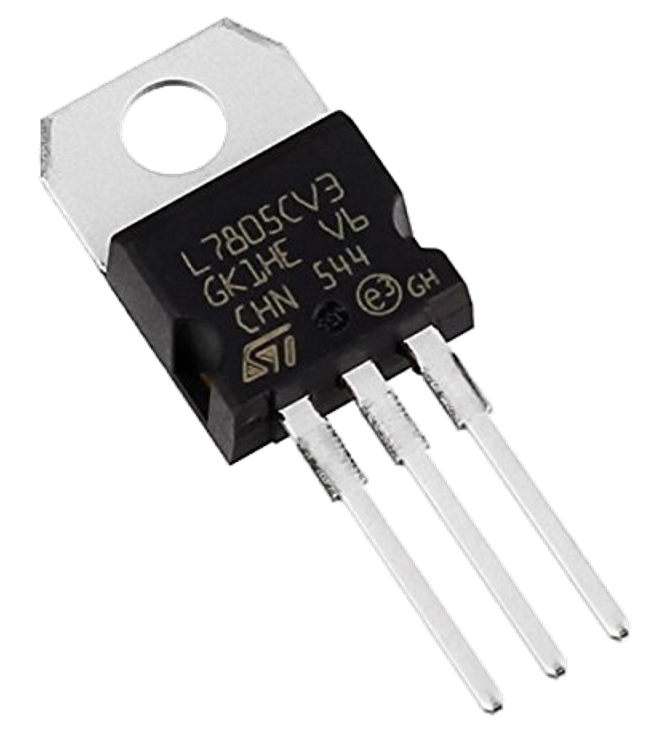
Get some LED strip and check out additional hardware components, tools and equipment
Above are all the components you need to assemble a complete QuinLED-Dig-Uno board! Again, often it’s best to order components for at least 5 boards, soldering doesn’t always go perfect and once you have one self-built Domotica device, it rarely stays at that number.
Also, don’t forget, this article only lists all the components you need, not the tools and other accessories you might also require. Make sure to take a scroll through this article to see what you might also need so you don’t get frustrated if you don’t have it while building!
If you still need LED strip check out my article about which addressable LED strips to buy here.
And to power it all, check out this article about power supplies!
p.s. If anything listed on here turns out to be wrong or the link has stopped working, please drop me a line using the contact form so I can correct it!

